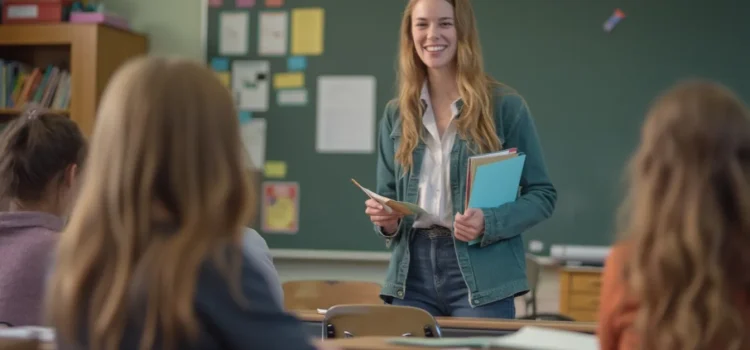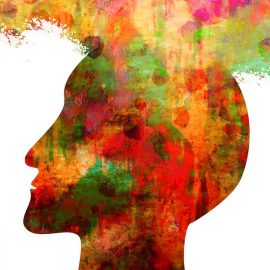
What makes each student uniquely intelligent? How can teachers adapt their methods to nurture different types of smarts in the classroom?
In Frames of Mind, Howard Gardner explores multiple intelligences in education. Applying his theory to teaching represents a middle ground between traditional education and “unschooling,” leveraging children’s natural curiosity within formal educational frameworks.
Keep reading to discover how understanding students’ intellectual diversity can transform teaching practices.
Multiple Intelligences in Education
Gardner explores some of the implications of his theory of multiple intelligences in education. We’ll cover how educators could make intelligence profiles for their students highlighting their strengths and weaknesses, and how they might use those profiles to guide their teaching practices.
Assessing Students’ Intelligences
Gardner encourages educators to consider how intelligent their students are in each specific way, rather than just how “smart” they are overall. He argues that education is more effective when tailored to individual strengths and weaknesses, and such profiles would help educators make personalized plans for their students.
Thus, he suggests that educators develop ways to assess their students’ individual profiles. Rather than giving every student a battery of formal assessments—which would be time-consuming and stressful—Gardner proposes letting children do what naturally interests them, and observing their behavior. While observing, educators should consider which specific intelligences each game or activity relies on, and look for signs of giftedness or developmental delay in regards to those intelligences. For example, a child who naturally takes charge among their friends by deciding what games to play could be showing unusually high interpersonal intelligence.
| Formal Education Versus “Unschooling” Suggesting that educators let children pursue their own interests resembles a more formalized version of unschooling, which is a radical form of homeschooling developed by educator John Holt in the 1970s. Unschooling emphasizes learner-chosen activities rather than relying on a preset curriculum. The foundational principle of unschooling is that children are innately curious and, if given the freedom to pursue their interests, will learn more on their own than they would at a traditional school. Therefore, unschooled children direct their own education through natural life experiences such as playing games, teaching themselves how to handle chores and other responsibilities, reading books that interest them, and interacting with members of their family and their community. However, research has shown that unschooling produces inconsistent results—unschooled children are much more likely to lack fundamental reading, math, and social skills than their school-educated peers. Gardner’s idea, then, represents a middle ground that combines the strengths of both approaches: leveraging children’s natural curiosity to guide formal education, rather than to replace it. |
Teaching Based on Intelligence Profiles
Gardner then discusses how educators might use information about students’ intellectual profiles to design more effective instruction. He suggests educators should focus on either developing students’ strengths, addressing their weaknesses, or pursuing a balanced approach.
He adds that different instructional methods might be effective for students with different intellectual profiles even when teaching the same subject matter. For example, when learning computer programming, students with strong logical-mathematical intelligence might benefit from an approach that emphasizes how computers interpret and execute code—how they “think,” so to speak. On the other hand, students with strong linguistic intelligence would probably do better with an approach that emphasizes the ways in which programming languages are similar to spoken or written languages, and how writing a program is like writing a story or essay for the computer to read.
To conclude, Gardner says that as knowledge about human cognitive development continues to grow, educators must consider new information when designing study plans and interventions. A better understanding of human intelligence will help guide better teaching practices, leading to a more educated and less frustrated populace.
| Personalized Learning: Then and Now Gardner’s suggestions here are not new ones—the theory of personalized learning dates back to at least the 1700s. However, the conventional classroom model—where one teacher could be responsible for 20 or 30 students—has historically made it impossible to provide highly individualized instruction. Recent technological developments have created new opportunities for implementing personalized learning in public school settings. Adaptive learning platforms, powered by sophisticated algorithms, can now adjust instruction based on student performance and learning patterns. For example, DreamBox Learning, a mathematics education platform, continuously analyzes student responses and adjusts problem difficulty, presentation methods, and learning paths in real time to optimize each student’s learning experience. Initial research on adaptive learning technologies has shown some promising results. Studies indicate that when integrated into a comprehensive educational program, these tools can improve student engagement and academic performance. However, this is a relatively new area of study; education researchers emphasize the need for more extensive data and better control of variables before drawing firm conclusions about whether adaptive learning tools are effective. |






